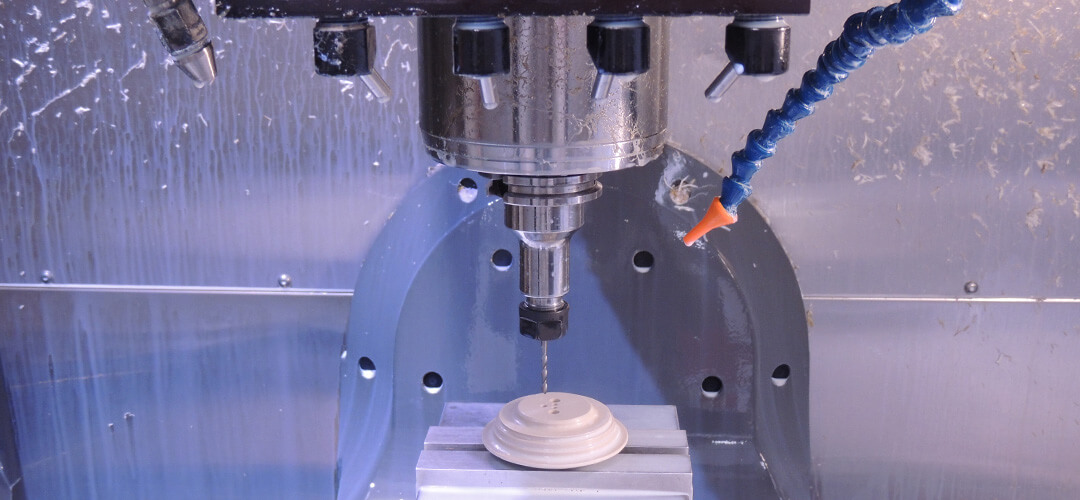This article explores The Effect of Fillers on the Electrical Properties of Thermoplastics.
Thermoplastics inherently possess advantageous chemical and mechanical properties, but can be easily modified to increase these properties or give the base polymer enhanced characteristics. Most plastics are dielectrics or insulators (poor conductors of electricity) and resist the flow of a current. This is one of the most useful properties of plastics and makes much of our modern technology possible through the use of plastics as coatings, switches and other electrical and electronic products.
As plastics are insulators, when voltage is applied and steadily increased on them, it will eventually reach a point when the electrical properties break down—the breakdown results in increasing an electrical arc across the electrodes, which causes a calamitous reduction in resistance.
What is Dielectric Strength?
Dielectric strength (Jindal.2023) is the ratio of the charge deposited in an insulating material between two metallic plates to the charge that can be stored when a vacuum or air replaces the insulating material. This is called electrical permittivity. The dielectric strength of a material is its ability to store electrical energy.
Factors Affecting Dielectric Strength
The dielectric strength of a plastic decreases with increased temperature. Mechanical loading has a substantial effect on dielectric strength. Mechanical load on insulators will create internal voids which function as pathways, making mechanically stressed insulators weaker in terms of dielectric strength.
The dielectric strength of plastic material is also affected by manufacturing attributes. An example is weld lines in injection molding or flow lines in compression molded materials. This can impact a plastic’s dielectric strength. Minor defects can affect insulators’ dielectric strength and reduce it by 30-40%.
Additives, fillers, and their effect on electrical properties
One of the advantages of working with polymers is by adding fillers to the base materials we can enhance the properties to better suit an application. Additives and fillers are organic or inorganic compounds that can be introduced into plastic to change its properties of the plastic.
The surface resistivity of a material determines the level to which it will conduct an electric charge. The lower the resistivity, the more conductive the material. Antistatic additives and electrostatic dissipative (ESD) fillers create low surface resistivity, preventing the buildup and uncontrolled discharge of static electricity.
ESD protection is important in the production and packaging of electronic components. Compounds at the high end of the resistivity scale shield against electromagnetic interference (EMI) or radio-frequency interference (RFI). Faster data transmission and broader electromagnetic frequencies are driving the need for better EMI/RFI protection for electronic devices.
EMI/RFI shielding fillers include conductive stainless steel fibers, carbon fibers, nickel-coated carbon fibers, metal flakes, graphite flakes, carbon nanotubes, carbon nanofibers and graphene (Avient. 2020).
Fibers made from glass, carbon, aramid, and other materials can be chopped and added to thermoplastic compounds to produce fiber-reinforced plastic (FRP) that can be injection molded or heat formed. Chopped fibers improve stiffness and other properties so that FRP can replace higher-performing materials and metals.
Carbon fibers are frequently added to polymers because they add several benefits, including increasing tensile strength without adding weight, improving heat deflection, and improving electrical conductivity. Conductive carbon black is a filler commonly used to create electrical conductivity. The fine black powder is added at relatively high levels and creates only black-colored parts. Some types of carbon black may slough, or shed invisible dust. For most applications, this is not a problem; but this dust can destroy electronic circuits, making non-sloughing fillers preferable for electronics production and packaging.
Graphite fillers, which can be a natural flake or synthetic, provide electrical and thermal conductivity. They also are thermally stable, chemically inert, and nonabrasive, and they provide low friction. This combination of properties makes graphite useful in gears, bearings, and seals. Graphite fillers can be combined in formulas with other fillers, such as mica, talc, or fibers. Graphite can also be used with the fluoropolymer PTFE when chemical inertness and lubricity are important.
Metallic fibers that create electrical conductivity include copper, silver and stainless steel. They can withstand high temperatures and are resistant to most chemicals, abrasion and dirt, and can be used with a range of colorants.
Some fillers are thermally conductive but electrically non-conductive. The thermal conductivity of conductive plastics is not as high as metal, but conductive plastics can be effective in thermal management. Base resins with non-conductive fillers are useful for such as applications such as insulators, stand-offs, and test fixtures. Electrically non-conductive fillers include: alumina silicate, aluminum oxide, nitride and boron nitride. Several of these are white and can be used with a range of colorants.
Conclusion
Combining fiber types, such as long-glass and long-carbon fibers, or combining fibers with minerals, such as talc, can optimize the cost and physical properties of your composite.
Keep in mind that high levels of fillers and fibers can be abrasive to processing equipment. Minimize equipment wear by using hardened or abrasion-resistant materials and coatings for extruder barrels, screws, molds, and cutting tools.
Part design and molding conditions can be just as important as polymer formulation. Fibers undergo stress during the injection molding process. As they cool, any defects caused by this stress can lead to warpage. Proper gate location, or mold cycling, and mold design can minimize flaws.
The design possibilities with thermoplastics and options for reinforcing and filling are endless. For every polymer form and function, there is a mineral, fiber, metal or carbon filler that will maximize its performance.
“Want to Learn More about Manufacturing using precision plastics? Follow us on Youtube @RoncelliPlastics!”

